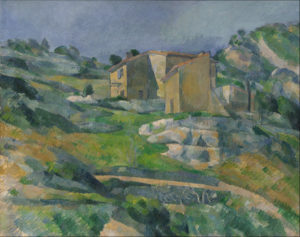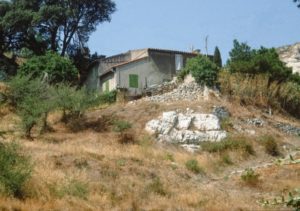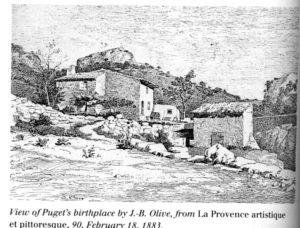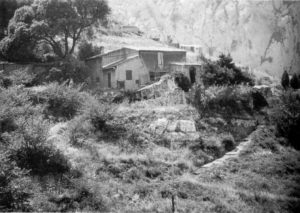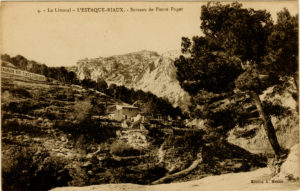R438 Maisons en Provence (la vallée de Riaux près de l’Estaque) 1882-1883 (FWN152)
Pavel Machotka
(Cliquer sur l’image pour l’agrandir)
The splendid Maisons en Provence, date estimated between 1879 and 1882, is tightly integrated by means of the short, full-paste brushstrokes, set down slowly and deliberately, yet the apparently unhurried pace of Cézanne’s work is no impediment to creating a dynamic interplay of forces in a well resolved composition.
Cézanne found the site much as we see it today, if we allow for the changes to the building. A house with rhythmically balancing roofs is set in an undulating hillside yet one where, after a closer look, we see the undulations in the hill become planes that parallel the roofs and lend a gentle rhythm to the whole. It is these correspondences that Cézanne seizes upon, and converts into his composition. He sets his touches down in long striations that descend the hill diagonally, and the striations, not the touches themselves, come to form the gentle oscillations that are the essence of the painting.
Cézanne’s use of colors is particularly subtle and restrained, and at first surprising: the hues suggest the brilliance and heat of the late afternoon sun not by their saturation but by their relation to each other. Close to each other in value, the blues, greens and Naples yellows nevertheless vibrate at their points of contact. The cobalt sky, for example, is especially saturated where it meets the orange-red roofs; there it appears condensed, as if competing for substance and prominence, but elsewhere it is closer to grey. Or the walls, set down without particular emphasis in a fairly pale Naples yellow, seem to gravitate toward a spot of saturated orange near the leftmost window; to that point — leftwards from the center — our eye, too, is tugged whenever it wanders over the rest of the frame.
Gowing and Rewald argue that Cézanne, presuming the house to be the birthplace of Pierre Puget, the sculptor and painter whom he admired, felt a connection to the site that went beyond its obvious attraction. (The presumption was in error, but was widely held in Cézanne’s time.)
Adapted from Pavel Machotka, Cézanne: Landscape into Art (enlarged edition), Prague: Arbor Vitae, 2014

